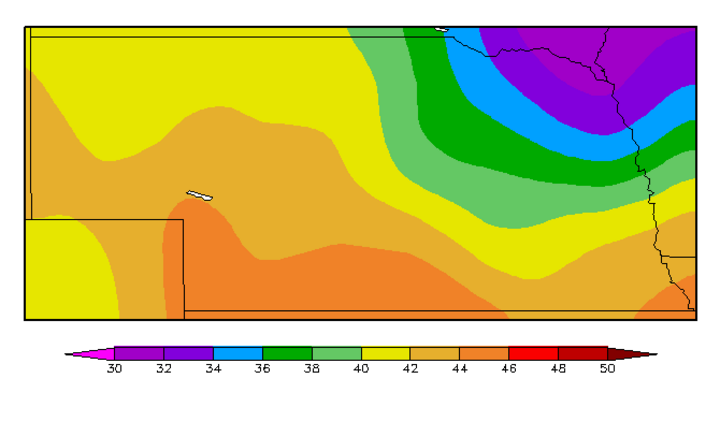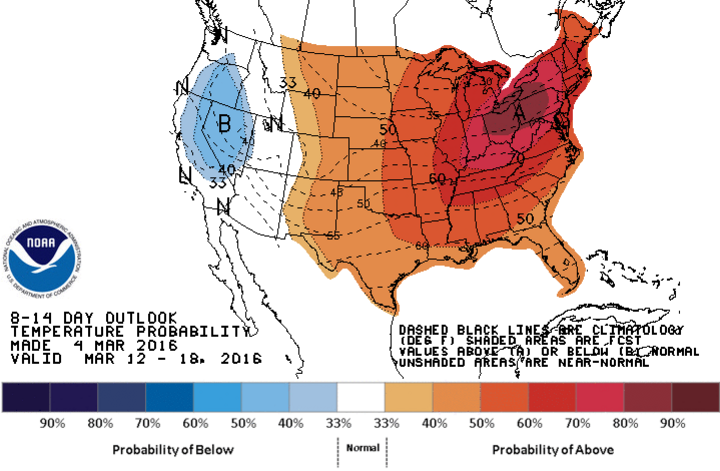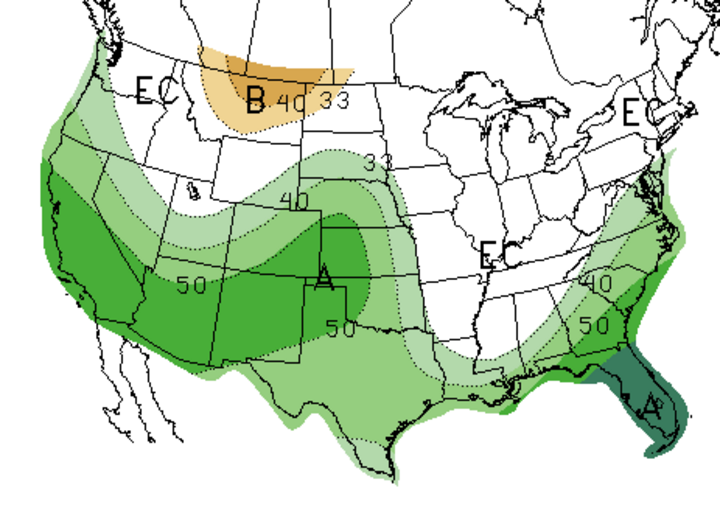

Figure 2. Nebraska soil temperatures on March 3, taken at 4 inches below the soil surface.
March 4, 2016
| Crop | Temp (°F) |
|---|---|
| Spring Wheat | 37 |
| Spring Barley | 40 |
| Rye | 41 |
| Oats | 43 |
| Alfalfa | 45 |
| Spring Canola | 50 |
| Sugarbeet | 50 |
| Field Corn | 55 |
| Soybean | 59 |
| Sunflower | 60 |
| Millet | 60 |
| Sorghum | 65 |
| Dry Bean | 70 |
| Table from Soil Temperature: A Guide for Planting Agronomic and Horticulture Crops in Nebraska (NebGuide G2122). | |
Current Conditions
The story heading into the meteorological spring has been the warm, fairly wet February and most of the winter season. Many Nebraska locations had one of their top 10 warmest and top 10 wettest winter seasons on record. This has led to above normal soil moisture and soil temperatures.
Soil moisture levels are very positive across most of the state. Areas in northeast Nebraska are seeing much above normal soil moisture values (Figure 1), while most of the state is near to slightly above normal. This moisture should provide adequate moisture for early pasture growth, wheat production, or seed germination later in the spring. Many locations in Iowa, Illinois, and Wisconsin have very saturated soils and will need significant drying before field operations can begin.
Soil temperatures have been tracking above normal for most of the winter for a large portion of the state, especially northern and west central Nebraska. This is due to above normal temperatures, increased soil moisture, and timely snow cover that kept soil temperatures from dropping too far during the winter. Current soil temperatures (Figure 2) are in the low 40s in portions of southern Nebraska, which is not far from the recommended germination temperatures for some agronomic crops (Table 1).
Looking Forward
After a fairly cool week, it is nice to know that warm temperatures are on the way and may stick around for a while. This weekend will feature temperatures climbing into the 60s and 70s as high pressure builds in over the Central Plains. There is a small chance for precipitation and even a slight chance of seeing an isolated thunderstorm late in the weekend or at the start of the work week, but chances remain low.
A ridge will continue to move through the mid US early next week with troughs over the east and west coasts. The trough over the west coast will move toward the central US, but will deepen and move south before ejecting across the central plains. The timing and strength of the system is still highly variable, but is expected here mid next week. This will probably produce some significant precipitation and possibly severe thunderstorms; however, most of this moisture may be south and east of Nebraska. Temperatures will drop after the trough moves through, but will rebound quickly. Models show a cut-off low over southern Texas toward the end of next week that will probably keep temperatures moderate and precipitation at a minimum.
The pattern of weather systems from the southwest US may continue over the next couple weeks and is the reason behind the cool temperatures expected over the western U.S. in the 8-14 day outlook (Figure 3) from the Climate Prediction Center. This outlook still gives Nebraska increased chances for above normal temperatures for that time period. As these systems move through the area, expect some temperature swings, but overall relatively warm conditions. With all that said, our weather pattern may be highly variable for at least the next couple weeks with hit-or-miss precipitation.
The CPC’s March forecast places increased odds for above normal precipitation for Nebraska and much of the central and southern plains (Figure 4). This forecast is due to the typical El Nino pattern for March in our area, as well as the forecast for multiple weather systems passing through the central US. Looking at the short-term models, there is a good chance that we will have below normal precipitation during the first half of March, so if we don’t get precipitation over the next couple weeks, we could see some early drying in the region and the monthly outlook may not verify. The forecast for the last half of the month is too difficult to predict at this time.
There is also a potential flood risk in extreme southeast Nebraska on the Missouri River due to the current soil moisture, near-to-above normal stream flows, and the expectation of above normal precipitation in March. The risk is minor, as far as flooding impact, but something to think about if you have fields in the low-lying areas.
The three-month outlook from the CPC continues to show above normal precipitation for most of Nebraska, but this may be strongly impacted by the precipitation expected in March. There is some concern that we could see some drying in April and May in Nebraska; however, this may not be all bad for field operations, as long as temperatures don’t get extremely warm.
Tyler Williams
Nebraska Extension Educator in Lancaster County
Twitter: @tylerw_unl
Blog: http://agclimatenebraska.weebly.com/




